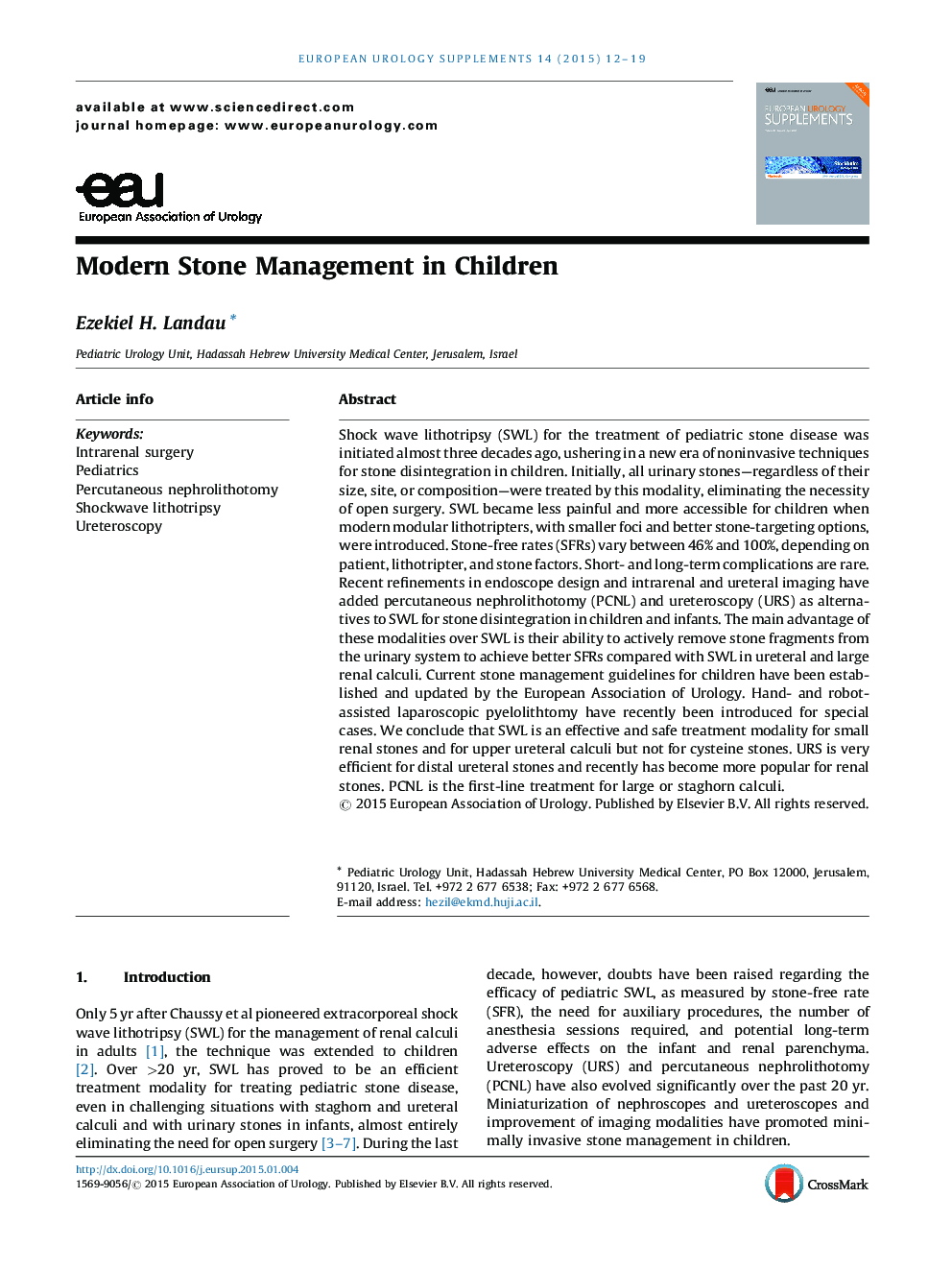| Article ID | Journal | Published Year | Pages | File Type |
|---|---|---|---|---|
| 3929388 | European Urology Supplements | 2015 | 8 Pages |
Shock wave lithotripsy (SWL) for the treatment of pediatric stone disease was initiated almost three decades ago, ushering in a new era of noninvasive techniques for stone disintegration in children. Initially, all urinary stones—regardless of their size, site, or composition—were treated by this modality, eliminating the necessity of open surgery. SWL became less painful and more accessible for children when modern modular lithotripters, with smaller foci and better stone-targeting options, were introduced. Stone-free rates (SFRs) vary between 46% and 100%, depending on patient, lithotripter, and stone factors. Short- and long-term complications are rare. Recent refinements in endoscope design and intrarenal and ureteral imaging have added percutaneous nephrolithotomy (PCNL) and ureteroscopy (URS) as alternatives to SWL for stone disintegration in children and infants. The main advantage of these modalities over SWL is their ability to actively remove stone fragments from the urinary system to achieve better SFRs compared with SWL in ureteral and large renal calculi. Current stone management guidelines for children have been established and updated by the European Association of Urology. Hand- and robot-assisted laparoscopic pyelolithtomy have recently been introduced for special cases. We conclude that SWL is an effective and safe treatment modality for small renal stones and for upper ureteral calculi but not for cysteine stones. URS is very efficient for distal ureteral stones and recently has become more popular for renal stones. PCNL is the first-line treatment for large or staghorn calculi.
